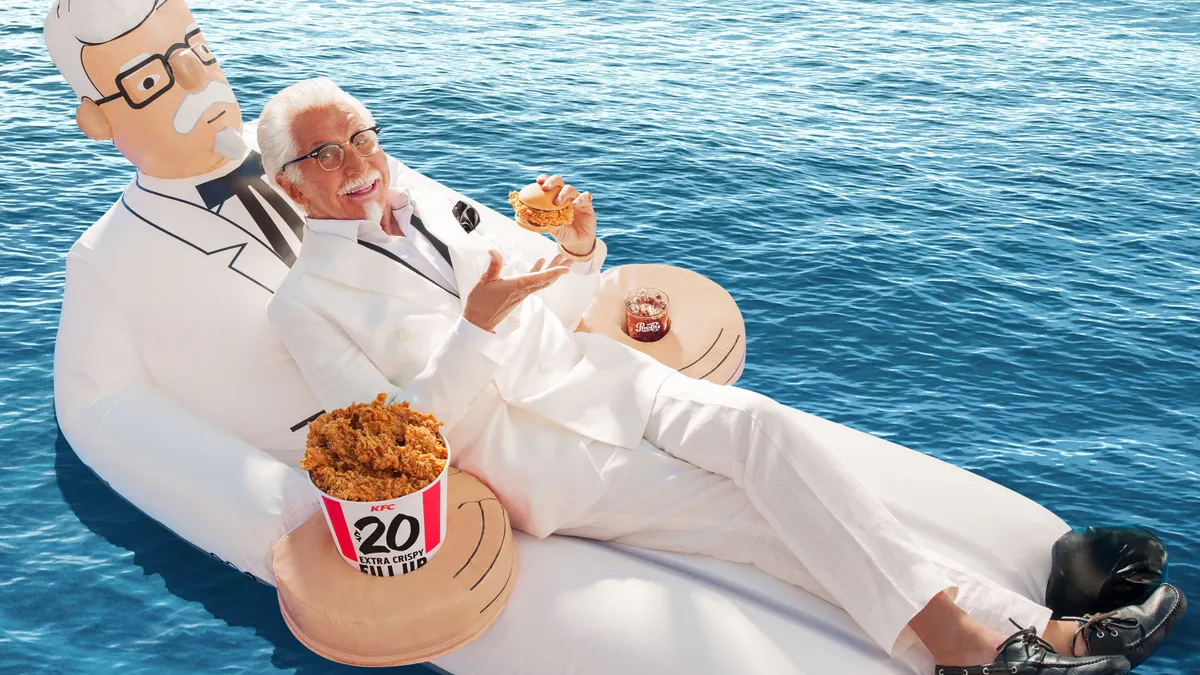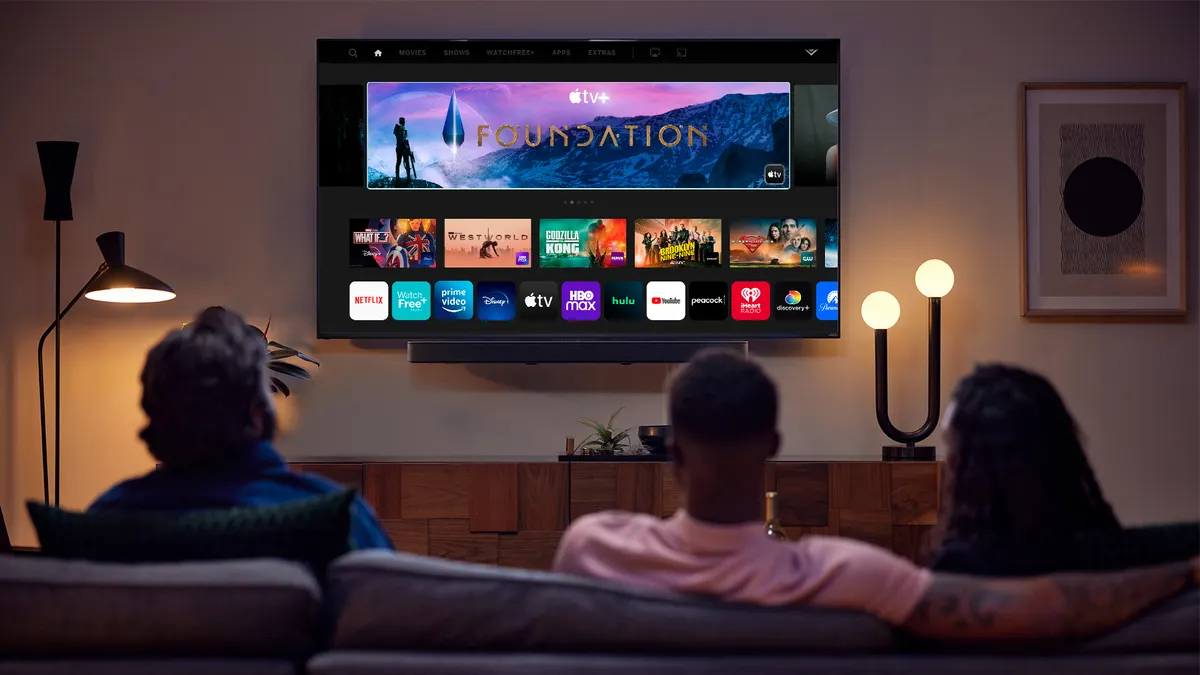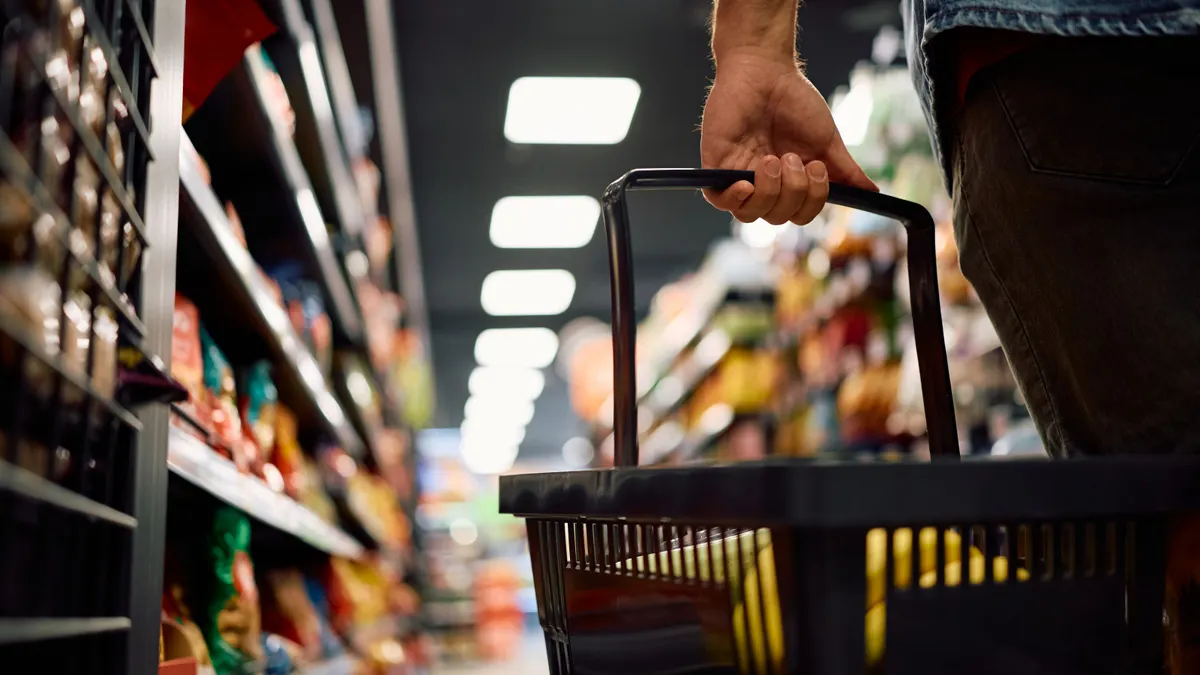In 1996, Chris Caldwell was an intern at Yum Brands. By 2014, he was CIO — and now CTO — of KFC.
"This was my first interview, my first internship and my first real job as well," Caldwell told CIO Dive.
Caldwell has had a front-row seat to Yum Brands' modernization, from rolling out Microsoft Exchange Servers to deploying global apps to launching e-learning for training worldwide.
KFC is one of the brands sitting under the Yum Brands umbrella, alongside Taco Bell and Pizza Hut. Each brand has unique qualities to set them apart from competitors and each other, but technology unifies them.
The brands regularly meet face-to-face, talk through their plans for the next year strategize. "[We] really brainstorm who's going to take point on what and how each of the other brands can learn something or participate or help determine what the requirements are," said Caldwell.
Meeting customers where they are
Caldwell shifted from CIO to CTO this year as part of KFC's focus on meeting customers where they are.
"When I started out as an intern, I was actually help desk support. Any challenges people had with their computers back then, I would go do deskside support," said Caldwell. Today his customers are restaurant patrons, operators and fellow franchises.
Yum runs more than 48,000 restaurants in 145 countries. Gaps in technology are inevitable. Large enterprises have to "[recognize] large areas of overlap, like the necessity of efficiency in order fulfillment and ordering [and] payment kiosk innovation," Miranda Lambert, research analyst at Euromonitor International, told CIO Dive.
Bridging gaps between employees, customers and brands is done by partnering with Yum's CEO Greg Creed and the various operations teams. Caldwell knows the partnership between him and his CEO is not focused on technology "but talking about pain points," he said.
KFC recently underwent an exercise with its operations team and got the same feedback from its franchise operators: inventory processes were "just very rudimentary and difficult for operators within the restaurant to execute on," said Caldwell. "From an inventory perspective, we're still relying on some paper-based processes, where they have multiple points of input, multiple places where they can make mistakes."
Now Caldwell is working on streamlining that process. "We heard it loud and clear from our franchisees and all our operators … if you have to tackle one thing, attack your inventory process."
Deploying tablets helped alleviate the hours dedicated to inventory management; almost half of all KFC restaurants have tablets for administrative tasks. Eventually employees will be able to use tablets for ordering inventory from their respective distribution center.
In the future KFC wants to predict what inventory is needed and have it automatically shipped to restaurants, RFID technology is also under consideration.
"We're just in the exploratory stages of that. But really, we're hitting inventory and supply chain from all aspects," said Caldwell.
Exploratory investments
With recent success in digital delivery, AI is the next big bet for KFC and the rest of its Yum family.
KFC is talking to several AI providers with pilot underway, narrowing in on the drive-thru. The chain makes 65% of its sales at the drive-thru, making it a key interface for business, reported Restaurant Dive.
"When you look at our business, it's still a very heavy drive-thru business," said Caldwell. "If we were able to make any improvements even if they were incremental improvements, it would have a massive impact on our business."
Caldwell is considering AI vendors with expertise in conversational AI to take over as the primary form of ordering. "It's kind of like your Google Assistant or Siri but at the drive-thru," he said.
In September, Yum Brands named former Walmart CIO Clay Johnson its overarching chief digital and technology officer. Johnson, who comes to Yum with an emphasis on failing fast, will focus on scaling Yum Brands and reaching a worldwide customer base using agile methods.
"Between delivery, app-based ordering, and now AI innovation, brands will be willing to invest more to find quality CTO [and] CIOs in the coming years. Even pulling from outside of the space to have them fit a certain niche that the company needs," said Lambert.
Coordination across Yum Brands
Johnson has oversight over the the tech strategy of KFC, Taco Bell and Pizza Hut. There are "regular touch points to all my peers within the brands … I think we've made a lot of inroads as far as collaborating across brands. With Clay joining the team, that'll continue in a big way," said Caldwell.
While each brand has different timelines for their technology investments, they coordinate on vendors so they "don't have to start all over again," he said.
Loyalty CRM platforms and Taco Bell's support kiosks are two examples of piloted vendor solutions one brand experiments with so the rest can learn. The other brand heads get the opportunity to ask: if they could restart the pilot, how would they have done it differently?
Most of the time "it comes down to pacing and sequencing within the brand and everything we have going on and willingness to invest in technology. We can't do all this stuff overnight," said Caldwell.
Not every restaurant enterprise shares the same method of collaboration. "I think that restaurant brands within a single company remain fairly independent," said Lambert.
Restaurant Brands International — owner of Tim Hortons, Burger King and Popeyes — has distinct operations. For example, Tim Horton's adopted Beyond Meat while Burger King opted for the Impossible Burger.
Strategic coordination is important with technology, but Yum Brands also has strengths specific to their chains. "Taco Bell and KFC have really done a lot to expand with Taco Bell getting into hotels and pop-ups and KFC creating a plethora of limited time offers," said Lambert. Pizza Hut has laid out plans for an overall simplification of its business model.
Darden — owner of Olive Garden, Longhorn Steakhouse and Seasons 52 — has also done a lot to diversify its portfolio. "Most people do not even recognize them as one brand unless they are purchasing a Darden gift card," said Lambert.
Changing of the guard
The restaurant industry's recent technology investments — including ones made by McDonald's, Starbucks and TGI Fridays — are impacting more than bottom lines. Tech investments are bringing IT out of the back office.
For example, Yum has an annual convention for its franchises to gather, learn about strategy, and have their goals heard.
"When I first took this role, I didn't even have a speaking part in the very first convention. And if you fast forward to this past convention, I don't think I left the stage for the entire convention," said Caldwell.
He is able to explain to franchises how tech was growing sales and improving operations. "To me, that's a bit of a barometer of how the roles change," he said. Franchises used to ask about menu changes, now they typically ask him:
-
What are we doing to drive digital sales?
-
What are we going to do with kiosk?
-
What are we doing with digital menu boards?
-
What's the digital strategy?
-
How will that beat out competitors?
Part of the reason technology chiefs are seeing more recognition is because previous technology investments are finally starting to prove their worth. "I think they're seeing the early wins as we adopt," said Caldwell. "Franchises see that."
But giving franchises technology calls for balance. Yum Brands can give franchisees technology to grow sales and build confidence "because a lot of the stuff we're asking them to invest in is going to have a payoff," Caldwell said.
Tablets proved their value early on, giving Caldwell leverage to deploy more innovative solutions. "I think just gives them more confidence and willingness to invest in the next thing," he said.























